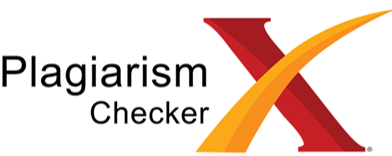e-ISSN
Author Guidelines
Submission Guidelines
- Language : Manuscripts can be written in either Indonesian or English.
- Originality : Manuscripts must be original, unpublished, and not under consideration for publication elsewhere.
- Topics : Manuscripts should contribute to one or more of the following topics: Computer Vision, Software Engineering, Natural Language Processing, Human-Machine Interface, Next Network Generation, IT Governance, Information Search Engine, Multimedia Security, Information Retrieval, Intelligent System, Distributed Computing System, Mobile Processing, Computer Network Security, Business Process, Cognitive Systems, Programming Methodology and Paradigm, Data Engineering, Knowledge-Based Management System, Knowledge Discovery in Data, Digital Signal Processing, Stochastic Systems, Information Theory, Intelligent Systems, Networking Technology, Optical Communication Technology, Next Generation Media, Robotic Instrumentation.
Manuscripts must be submitted via the website: (https://journal.literasikhatulistiwa.org/index.php/kjarti/user/register). Manuscripts should be prepared according to the author guidelines and the provided template. The writing template can be downloaded here.
The manuscript should include the following sections: Abstract (200 - 250 words), Introduction, Literature Review, Research Methods, Results & Discussion, Conclusion, and References.
Manuscript Structure
- Title : Article titles should be specific, effective, clear, and no longer than 16 words. Avoid the inclusion of research locations, regulatory names, and abbreviations.
- Affiliation : Include full name without title, name of institution/institution, email
- Abstract : Abstracts are written between 200-250 words. The abstract explicitly contains: brief background (one sentence only, may be missing), research objectives, research methods, and important research findings.
- Keywords : Consists of 3 to 5 words. Written in alphabetical order. Between keywords are separated by semicolons (;). Excludes the name of the regulation and the name of the institution
- Introduction : The introduction contains background, theoretical studies, problems, gap analysis, novelty of research results (state of the art), and ends with research objectives. Gap analysis contains the gap between das sollen and das sein. Novelty of research results (state of the art) contains a description of research studies with previous research (literature review)
- Research Methods : The research method contains research specifications, research design, research type, approach method, data collection techniques, and data analysis methods used in the research.
- Results AND Discussion : This section presents the research findings systematically with in-depth discussion. Results are presented in the form of narrative text, tables, graphs, or images that support data interpretation. The research results are clearly explained. The data obtained are arranged based on the research objectives and can be equipped with visualizations (tables or images) to clarify the information.
- Conclusion : The conclusion section contains a brief summary of the results of the research that has been conducted, implications of the findings, and recommendations for further research. Conclusions should be clear, concise, and reflect the research objectives.
- References : References cited during the preparation of the article should be included in the bibliography. For efficiency and brevity purposes, the number of references used should be no more than 40 and no less than 10, with a proportion of 70% journal references, preferably international journals, and 30% book references. Journal references should be from the last 5 years, while book references can be more flexible. This journal uses the American Psychological Association 7th format.











